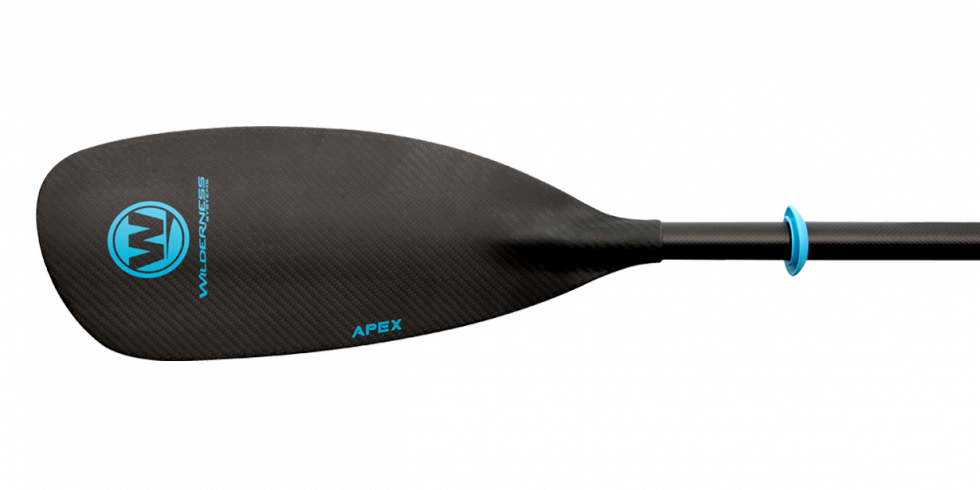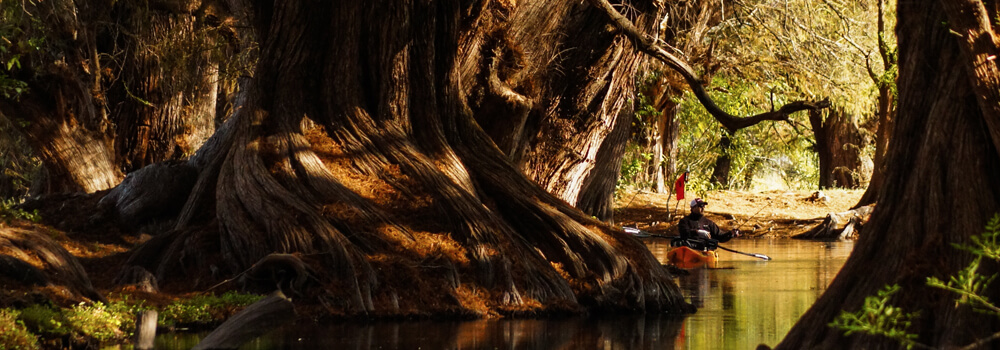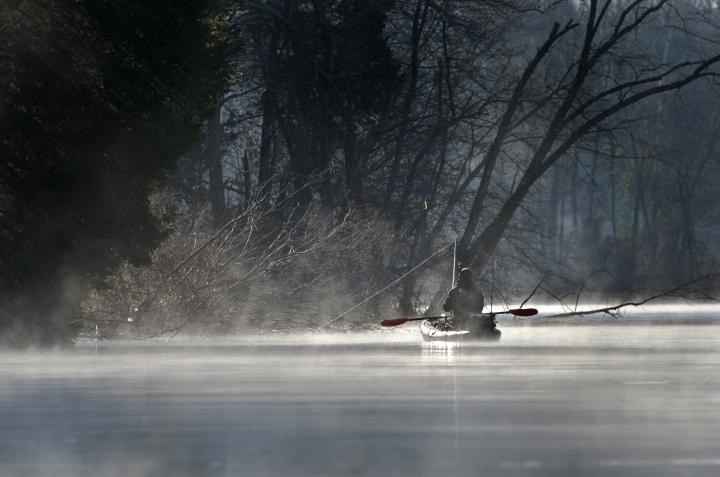
Apex Carbon (2 Sizes)
The Apex Rec/Touring Carbon paddle weights just 27 oz and is the lightest option in the Apex series.
Learn More
The Apex Rec/Touring Carbon paddle weights just 27 oz and is the lightest option in the Apex series.
Learn MoreJoin the Wilderness Systems Email Community
Be the first to know about new products, team news and events.



Be ready for cold water BEFORE you get to the water’s edge.
By Wade Nichols
Here in the Northern regions spring is beginning to show itself with warming days and slightly climbing water temps. The urge to get the ol’ battle yak cleaned up, double check those reels, and make sure everything’s in just the right place inside your crate, is strong… and the growing NEED to get out on the water and start catching fish is just about unbearable! But before you do, I would like to remind you of 10 simple things that you can do to greatly impact your safety.
1. Always dress for the water temperature not the air temperature. Although water that is 50 degrees Fahrenheit may seem like a dang hot spring when compared to the frozen sheet of ice you were walking on just weeks ago, you need to remember that a person still only stands a 50% chance of survival when in 50 degree water for 50 minutes… and I always tell everyone “You usually don’t recover from a case of The Dead.”
2. Always, always, ALWAYS wear your PFD… especially in cold water conditions. If you have the inflatable type, make sure it is armed. Just because it wasn’t inflated doesn’t automatically mean that it’s still armed. The Co2 canisters can (and do!) come loose, making the PFD useless. If you use the conventional foam flotation type, check for any tears or deterioration, and broken straps or buckles, and fix or replace as needed. So take the time before you get to the water’s edge to check it.
3. Make yourself a dry bag to stow on the kayak with you in case you or a fishing buddy does take a spill. Don’t be cheap, buy a good quality purpose built dry bag as the contents are lifesaving if you ever need them. In this dry bag, have at least a complete change of clothes, a thermal emergency blanket, a way to start a fire (I like road flares as they serve a double purpose), a super absorbent towel of some sort, a signaling device and an international destress flag (those last two items can usually be purchased as a “kit” that may have other useful items included as well).
4. For the vast majority of us, our phones have become our only line of communication with those around us. Keep your phone on your person and sealed in a quality WATERPROOF case or dry bag. If you go in the water and your phone becomes disabled or lost, your bad situation has just become much worse without a way to contact someone for help.
5. Double check all of your kayak associated gear such as: Your paddle… are the blades cracked? Is the shaft and/or ferrule broken? Your kayak… are all the hatches tight? Any visible cracks or damage to the hull? Is your seat in good shape? Do you have a drain plug… is it in? I find it best to just start at one end and work my way to the other end fiddling with everything that’s attached to make sure everything is as it should be. Get it all right now while you’re standing on dry ground, because the time to be reaching around behind you to adjust something isn’t when you’re floating around in 45 degree water.
6. The night before you plan on hitting that cold water get all of your gear ready to go so you can quickly and efficiently rig up and launch, and then go through in your head what you are going to do once you reach your destination. This will help lessen your wandering mind (“did I remember my anchor?” “Shoot! I forgot to charge my battery!” “I left the dang thermos full of coffee in the car!” “Where’s my white spinnerbait?!?” etc.). Having everything already squared away and knowing it, will let you focus on the situation at hand, because your level of situational awareness must be turned up to “11” when out on deadly cold waters.
7. Don’t forget to hydrate the night before. A severe leg or back cramp due to dehydration can be the trigger event that leads to having an accident while out on the water. Don’t let the tragic irony of being killed by water because you didn’t drink enough water happen to you!
8. Make a float plan and give it to someone (or multiple people) and then stick to that plan. If the plan changes, let them know. Most people want to associate a “float plan” only with being on moving water… a float plan is simply a good way to let someone know where and when you will be when your there. So include things like: body of water (specific locations if necessary), where you plan to launch, what time you plan on getting there, what time you plan on leaving, names and phone numbers of people who plan on being with you, which kayak you plan to take, possibly set up times for “check-ins” via phone calls or text messages, etc. You get the idea… The more information you can give, the better.
9. Put a change of clothes and a towel in your vehicle in case you slip on the ramp and get yourself wet before you even launch. Never start your trip out on the water already wet! I usually have a few extra pairs of warm socks laying around because it always seems like no matter how hard I try, somehow I manage to get my feet wet just rigging my kayak!
10. Learn the beginning signs of hypothermia and take immediate action when you (or see someone else) feel them. Look for: Shivering (at first, this may eventually go away though), clumsiness, lack of coordination, slurred speech, mumbling, confusion, difficulty making decisions, and poor decision making. If any of these conditions are encountered get off the water and get yourself (or your buddy) warm.
Fishing cold waters can be a very rewarding but also very dangerous. Do your homework, talk to those of us that have the experience, prepare and outfit yourself accordingly, and then get out there and have fun, chip the ice off of your guides, and catch a few fish, but always keep your safety at the top of your priority list.
Photo by Mike Ernst Bostic Photography